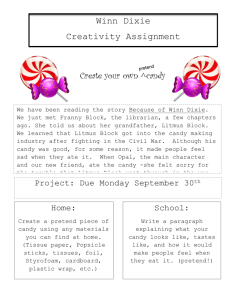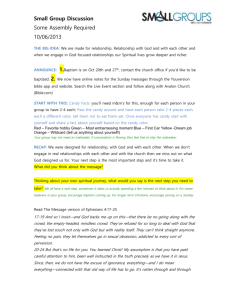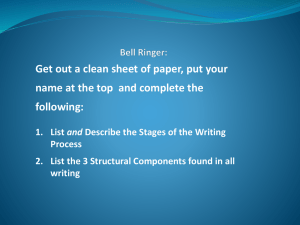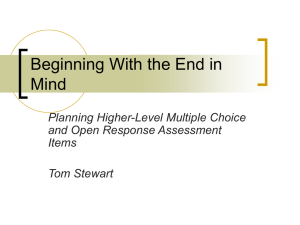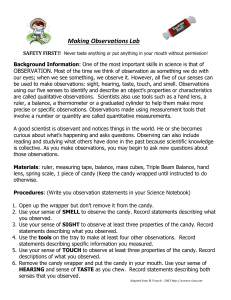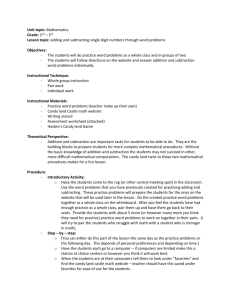problem solving lesson
advertisement
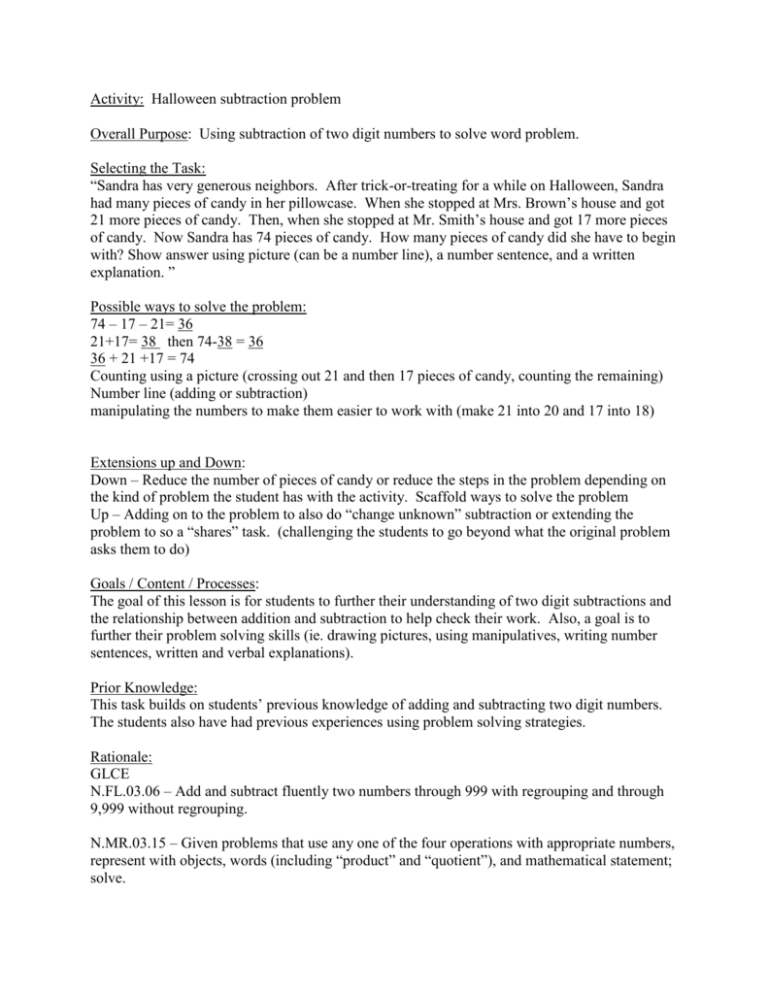
Activity: Halloween subtraction problem Overall Purpose: Using subtraction of two digit numbers to solve word problem. Selecting the Task: “Sandra has very generous neighbors. After trick-or-treating for a while on Halloween, Sandra had many pieces of candy in her pillowcase. When she stopped at Mrs. Brown’s house and got 21 more pieces of candy. Then, when she stopped at Mr. Smith’s house and got 17 more pieces of candy. Now Sandra has 74 pieces of candy. How many pieces of candy did she have to begin with? Show answer using picture (can be a number line), a number sentence, and a written explanation. ” Possible ways to solve the problem: 74 – 17 – 21= 36 21+17= 38 then 74-38 = 36 36 + 21 +17 = 74 Counting using a picture (crossing out 21 and then 17 pieces of candy, counting the remaining) Number line (adding or subtraction) manipulating the numbers to make them easier to work with (make 21 into 20 and 17 into 18) Extensions up and Down: Down – Reduce the number of pieces of candy or reduce the steps in the problem depending on the kind of problem the student has with the activity. Scaffold ways to solve the problem Up – Adding on to the problem to also do “change unknown” subtraction or extending the problem to so a “shares” task. (challenging the students to go beyond what the original problem asks them to do) Goals / Content / Processes: The goal of this lesson is for students to further their understanding of two digit subtractions and the relationship between addition and subtraction to help check their work. Also, a goal is to further their problem solving skills (ie. drawing pictures, using manipulatives, writing number sentences, written and verbal explanations). Prior Knowledge: This task builds on students’ previous knowledge of adding and subtracting two digit numbers. The students also have had previous experiences using problem solving strategies. Rationale: GLCE N.FL.03.06 – Add and subtract fluently two numbers through 999 with regrouping and through 9,999 without regrouping. N.MR.03.15 – Given problems that use any one of the four operations with appropriate numbers, represent with objects, words (including “product” and “quotient”), and mathematical statement; solve. Van de Walle Chapter 10: “A significant method of developing meaning for the operations is to have children solve contextual problems or story problems.” This problem requires students to use two digit subtraction, and is modeled after “Join: Initial Unknown” and the extension is modeled after “Change Unknown.” (144) Barb Vanderveen: Knowledge Objective Assessment: Observation of problem representation, Pictures and other recording strategies used by the students, How the student approach the problem, How the students add the neighbors candy, and how they determine how many pieces of candy Sandra started with. (hopefully using subtraction) Also how the students are able to explain and justify their work/answers. Sources: Van de Walle, J. A. (2004) Elementary and Middle School Mathematics. P.144-145. Michigan Department of Education: Grade Level Content Expectations. Third Grade Mathematics. Materials: Have counters, base ten blocks, or any kind of materials they would want to use to solve the problem available. Have the problem written on the board before the lesson starts. Cover the problem. Instructional strategies: Whole group before Pairs/groups while solving problem Whole group after Lesson Sequence / Questions: Before: Introduction (~ 10 minutes) “Today we are going to work on a problem involving candy! We are going to use strategies to figure out this problem like you use every day on your DMP.” What are some of those strategies? Tell them the sequence of events – First talk about problem as a whole class, then work on the problem in groups of two or three, then discuss the problem as a whole class. Present the task: Uncover the task from the board. Have the class read the problem out loud. “What is the problem asking?” Brainstorm on board ways to work in pairs and give scenario to give them ways to solve possible partner problems. Include things they don’t include highlighting doing their own work while helping and sharing their ideas with their partner. Call out the pairs and assign them to a place to work. During the task: (assess student work, look for samples to be shared, ask questions, scaffold where needed, extend where needed) (~15 minutes) “What do we need to know to solve this problem?’ “Why did you solve the problem this way?” “What’s another way to solve this problem?” “Can you explain what your partner is doing?” “Explain what you have done here...?” *Other questions will come up based on how students are working on the problem After the Task: Bring the class back to a whole on carpet, ask for suggestions for how to have a discussion where everyone can be involved. Ask the students how they solved the problem, if no one is offering an answer, ask specific pairs to share (based on the work we saw them doing). Any questions on this way to solve the problem? Can anyone explain how _____ solved the problem? Can anyone make any connections between their own solution and _____’s solution. *Questions will be based on what the students actually do in solving the problemm.

